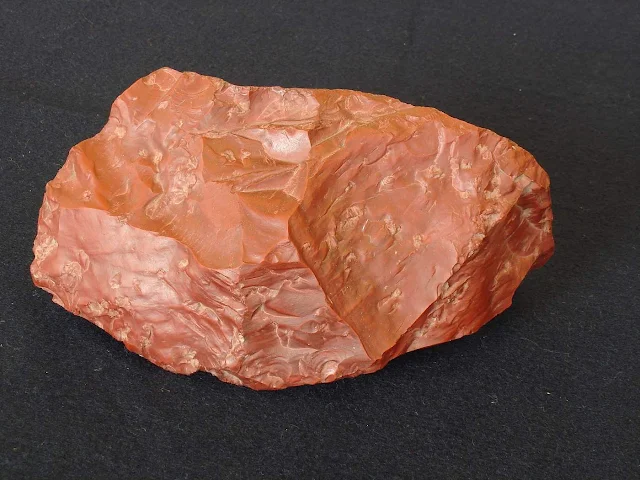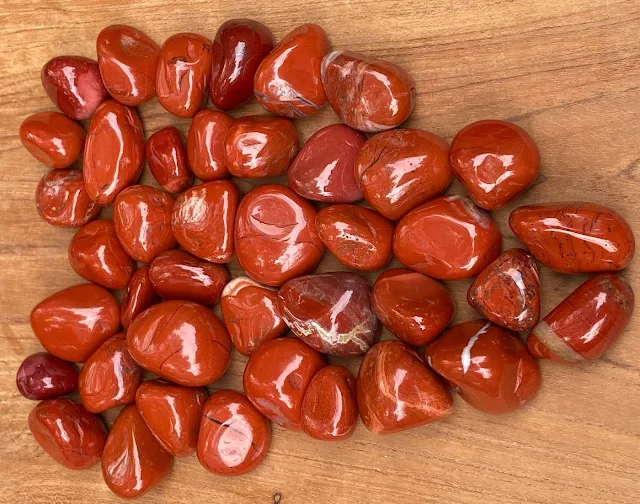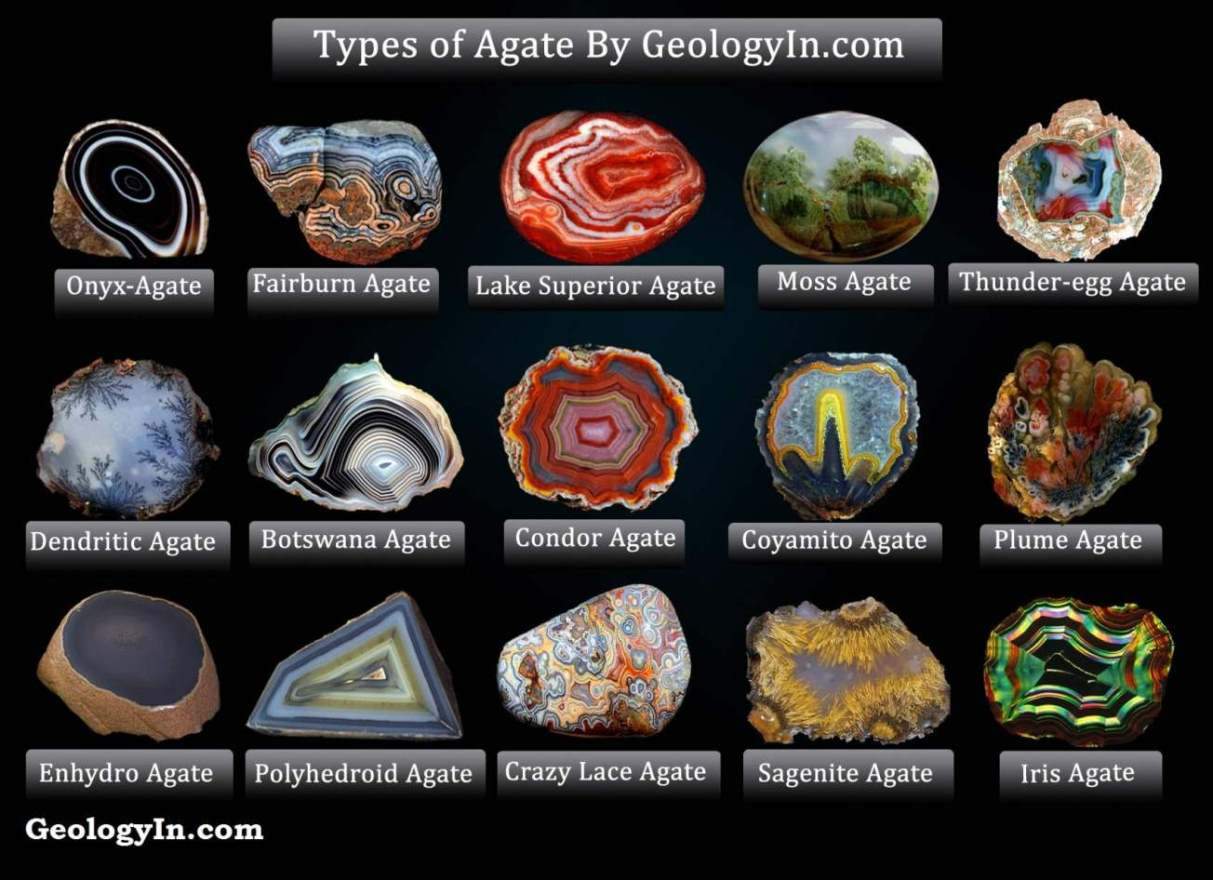Red Jasper: Properties, Uses, Occurrence
Red Jasper is an opaque variety of the mineral chalcedony, which is itself a microcrystalline variety of quartz. It belongs to the larger group of silicates, the most abundant mineral group on Earth.
Red Jasper is characterized by its deep red color, which is derived from inclusions of iron oxides, particularly hematite.
Red Jasper has been used for centuries in various cultures around the world for its beauty, durability, and symbolic significance. Evidence of Red Jasper use has been found in ancient Egypt, Mesopotamia, and the Americas.
Red Jasper Formation
Red Jasper forms when microscopic quartz crystals aggregate and become cemented together. The red color is typically caused by the presence of iron oxide impurities, specifically hematite. Other impurities can cause variations in color, such as yellow from goethite or brown from clay.
Red jasper forms in various geological environments, including:
Sedimentary deposits: Iron-rich sediments like mudstones and siltstones can undergo chemical precipitation and recrystallization, leading to the formation of jasper.
Volcanic environments: Volcanic ash and hot springs rich in silica and iron can precipitate and solidify into jasper deposits.
Hydrothermal activity: Hot, mineral-rich fluids circulating through rock formations can dissolve and redeposit silica and iron oxides, creating jasper veins and nodules.
 |
| Rough Red jasper from Salish Sea, Canada Photo: Coolbreezeagates/IG |
Red Jasper Properties
Composition: Primarily silicon dioxide (SiO₂) with inclusions of iron oxide (Fe₂O₃) in the form of hematite or goethite, contributing to its vibrant red color.
Color: Red jasper's fiery hues can range from a pale orange-red to a deep, almost wine-red. Some specimens may even exhibit stunning chatoyancy, a "cat's eye" effect caused by the light reflecting off the iron oxide inclusions.
Luster: Vitreous, meaning like glass with a bright and glassy shine.
Crystal System: Trigonal
Streak: White
Hardness: 7 on the Mohs scale, making it a relatively hard and durable stone, able to scratch steel.
Cleavage: Weak to absent, meaning it doesn't cleave easily in specific directions.
Crystal Form: Typically found in massive or botryoidal (grape-like) forms, rather than well-defined crystals.
Density: Approximately 2.6 to 2.7 g/cm³, a measure of how heavy it is for its size.
Transparency: Can be transparent, translucent, or opaque depending on the concentration and distribution of iron oxide inclusions.
Fracture: Conchoidal, meaning it breaks with smooth, curved surfaces like shells.
Specific Gravity: 2.6 to 2.7, a more precise measure of density compared to water.
Solubility: Insoluble in water and most common acids, making it resistant to weathering and chemical alterations.
Magnetism: Non-magnetic, not attracted to or repelled by magnets.
Fluorescence: May exhibit weak fluorescence under longwave ultraviolet light, ranging from yellow to orange.
Pleochroism: Weak to absent, meaning the color doesn't change significantly when viewed from different directions.
Refractive Index: 1.544 to 1.553 for the ordinary ray and 1.553 to 1.557 for the extraordinary ray, demonstrating a slight birefringence, the property of bending light differently in different directions.
Occurrence: Found worldwide, often in sedimentary formations like iron-rich cherts, volcanic ash deposits, and hydrothermal veins.
Red Jasper Uses
Jewelry: Red Jasper's vibrant color and durability make it a popular choice for necklaces, bracelets, rings, and earrings.
Ornamental Objects: Its unique patterns and hues are carved into sculptures, figurines, and decorative items.
Past Tools and Weapons: Red Jasper's hardness and fracture qualities were historically used to craft arrowheads, knives, and other tools.
Crystal Healing: Some practitioners utilize Red Jasper to promote circulation, reduce inflammation, and relieve pain.
Sculptures and Art Pieces: Red Jasper's earthy beauty inspires artists and designers to create striking sculptures and contemporary art.
Ancient Artifacts: Red Jasper has been found in artifacts from various cultures, including ancient Egyptian amulets and Roman seals, showcasing its enduring appeal.
Red Jasper Metaphysical
- Grounding & Stability: Helps connect one to Earth's energy, promoting security and peace.
- Protection: Shields against negative energy and harmful influences.
- Passion & Motivation: Increases motivation, drive, and ambition.
Note: The metaphysical properties of crystals are not scientifically proven.
 |
| Rough red jasper - Brazil Photo: Eurico Zimbres |
Where is Red Jasper Found
Finding red jasper in its natural setting requires some geological detective work. Keep an eye out for exposed volcanic or igneous rocks, particularly near cracks, fissures, and veins. Stream beds and riverbanks can also reveal tumbled red jasper treasures transported by water.
Red Jasper is found in many parts of the world, including:
Brazil: One of the most significant sources of high-quality red jasper, known for its vibrant red color and beautiful patterns, With deposits found in the states of Minas Gerais, Rio Grande do Sul, and Bahia.
India: Another major source, known for its red jasper with a more opaque appearance and a variety of red shades, with major deposits found in the states of Rajasthan, Gujarat, and Madhya Pradesh.
Russia: Russia has significant deposits of Red Jasper, particularly in the Ural Mountains and the Altai Republic.
 |
| Red Jasper Tumbled Stone |
United States: Notably found in Arizona, Oregon, and California, often with unique patterns and inclusions.
Australia: Australia has several minor sources of Red Jasper, mainly in Western Australia and Queensland.
Madagascar: Madagascar is a growing source of Red Jasper, known for its unique and vibrant colors.
Indonesia: Indonesia has deposits of Red Jasper, particularly on the islands of Java and Sumatra.
Africa: South Africa, Namibia, Zimbabwe
 |
| Polished Red Jasper |
 |
| Rough Red Jasper |
Whether you're captivated by its fiery beauty, intrigued by its scientific aspects, or curious about its historical significance, red jasper continues to be a source of fascination and wonder. Its enduring appeal lies in its unique combination of natural beauty, diverse applications, and rich cultural history.
See also:
Bumblebee Jasper
Howardite - Rattlesnake Jasper
Ocean Jasper: Formation, Colors and Uses


%20(1).webp)






